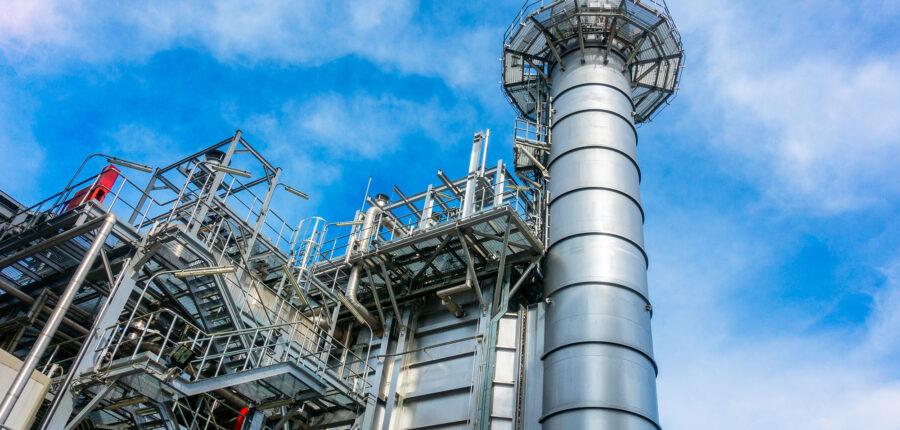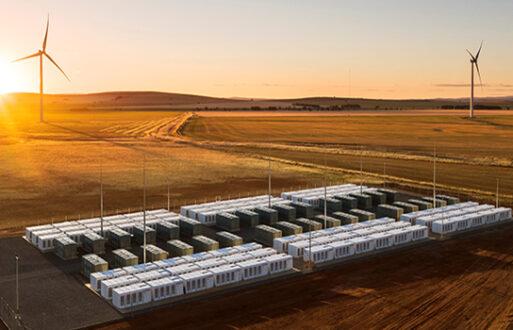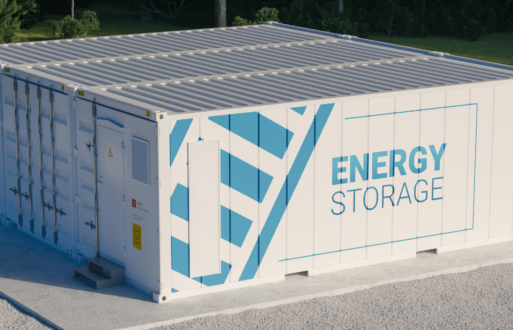Facing both rising costs for fossil fuels and the need to reduce greenhouse gas emissions to mitigate climate change, the electric utility industry is transforming itself by integrating more sustainable resources into the energy mix. As this recalibration happens, it will be critical for utilities to optimize both power plant efficiencies and the cost of power production in order to meet their reliability and economic mandates.
Read on to learn more about power plant efficiencies and how optimization software can help balance efficiency and costs.
Measuring efficiency: heat rate of a power plant
A power plant’s efficiency is measured by its heat rate, which is the amount of energy required to generate 1 kilowatt-hour (kWh) of electricity. The power plant efficiency calculation divides 3,412 British thermal unit (Btu) (the equivalent of 1 kWh of electricity) by the heat rate. For example, if the heat rate is 7,500 Btu, you’d divide 3,412 by 7,500 and get a 45% efficiency rate.
In traditional power plants, electricity is generated by burning a fuel source such as coal. You convert the energy stored in the feedstock by burning it to generate steam. That steam drives a turbine, the turbine runs the alternator, and the alternator generates the electricity.
Non-traditional power plants, like wind and solar, have no fuel stocks other than what’s provided by nature, so heat rate is not a part of the efficiency formula. Instead, a solar panel’s efficiency rating is measured as the amount of sunlight (solar irradiance) that falls on the solar panel that can be converted into usable electricity. Wind farm efficiency is based on the amount of energy in the wind that the wind turbines can convert into electricity.
Whether we’re talking about traditional or non-traditional generation, some amount of energy is lost during the conversion process — how much depends on the fuel source. Let’s look at how that plays out with a power plant efficiency comparison.
Traditional resource efficiencies
As of 2023, Nuclear power plant efficiency averages around 33%, which is comparable to other fossil fuel-based generation units. This means that 67% of the energy produced by a nuclear plant is lost and only 33% is converted into electricity. Some modern nuclear plants, known as very high temperature reactors, may be able to achieve 45% to 50% efficiency.
Coal power plant efficiency is very similar to nuclear, with a typical U.S. coal plant operating at 32% to 33% efficiency. The U.S. Department of Energy’s Transformative Power Systems Research Program is working on concepts to develop small, flexible, low-emissions coal plants that could achieve 40% to 45% efficiency.
There are two different types of natural gas power plants — simple cycle and combined cycle. A simple cycle natural gas power plant efficiency rate tends to be lower, ranging from 33% to 43%. On the other hand, a combined cycle power plant’s efficiency can reach upwards of 60% because it captures and uses the plant’s hot exhaust gases to spin a secondary turbine, which generates more electricity. The result is that less energy is lost in the conversion process.
U.S. oil power plant efficiency rates have ranged between 30% and 32% since 2001. In 2023, oil-powered plants had an efficiency rate of 30.4%.
With a 90% efficiency rate, hydro plants are the most efficient power plants. This is because dams funnel water directly to the turbines that generate the electricity, resulting in very little energy loss during the conversion process.
Non-traditional resource efficiencies
When it comes to non-traditional power sources, wind power plants are between 35% and 47% efficient (the theoretical maximum efficiency wind power can achieve is 59.3%). Thanks to significant technological advancements in recent years, the efficiency of solar power plants is now roughly 22%, a number that is expected to continue to climb. In 2024, one solar manufacturer’s panels were certified to be 33.9% efficient by the National Renewable Energy Laboratory.
Some discussions around non-traditional energy sources include ocean thermal energy conversion (OTEC), which produces energy by harnessing the thermal gradients, or temperature differences, between surface waters and deep sea waters. However, the overall efficiency of OTEC power plants is so low (between 2.4% and 5.4%) that the technology is not really a viable or cost-effective option for most utilities to even consider.
Cost to produce power
So, now that we understand power plant efficiencies, let’s consider perhaps a bigger issue — the cost of producing power with each type of plant. Here, we need to consider not only the cost of the feedstock but operational efficiencies that stem from the flexibility, or inflexibility, of the resource.
Traditional resource costs
Nuclear power is very inexpensive to generate, but it’s also incredibly inflexible. Once a nuclear power plant is running, it runs at the same rate regardless of the electricity demand — if your nuclear plant produces 100 megawatts (MW), you’ll get 100 MW whether it’s consumed or not. If your supply exceeds your demand, you’re essentially producing energy that will be wasted unless it can be sold to another utility.
Once the backbone of our electric supply, coal-fired plants are only slightly more expensive to operate than nuclear. However, because operators can adjust the output somewhat based on demand, coal units are more flexible than nuclear. That said, they’re still relatively inflexible because you can’t turn a coal plant off and on based on demand.
Natural gas plants are more expensive to operate because of the rising price of natural gas. That said, they’re much more flexible than coal and nuclear plants. With faster ramp speeds and the ability to stop and start generation daily, natural gas plants are better able to meet fluctuating demand — you can turn them on when you need them and off when you don’t.
Likewise, oil-powered combustion turbines are very flexible but more expensive to operate because of the cost of the feedstock.
Non-traditional resource costs
Non-traditional resources, while less efficient than most of the fossil fuel-based units, are considerably cheaper to operate because they don’t require any feedstock other than the wind and sun provided by Mother Nature. The downside to renewables is that they’re intermittent. Because utilities can’t control the wind or the sun, they can’t control when renewable plants will produce power. As such, renewables need to be backed up by more controllable and flexible resources like natural gas plants.
Coal can also back up renewables, but coal plants continue to be retired at an accelerated pace due to new regulations like the Environmental Protection Agency’s Good Neighbor Plan, which aims to reduce smog-forming pollution from power plants. In 2025, 14.1 GW of coal-fired capacity is expected to be shuttered.
Energy storage resources like batteries can also be used to mitigate the intermittency of renewables by storing energy until it’s needed. As battery prices continue to drop, these solutions become
Optimization balances the efficiency and economics equation
Every utility has a mandate to provide reliable electricity, and naturally they want to do that in the most cost-effective manner. But how can they balance these two often competing goals? The answer is simple: optimization.
Artificial-intelligence driven software tools, like those offered by PCI Energy Solutions help utilities optimize their entire energy portfolio by controlling peak periods, determining when and how to use energy storage resources, or making unit commitment decisions.
Software tools can be employed to match electricity supply with real-time demand and do it in the most cost-effective manner. By analyzing things like market conditions, typical consumer demand, the efficiency and availability of generation resources, the cost of running those resources, and even weather conditions, the software can make recommendations on which resources should be run at what time, and at what rate.
Efficiency and production costs both have huge economic and reliability implications for utilities, but optimization software can ensure that your entire energy portfolio is being used in the most efficient way possible.
ISO/RTO Documentation Chatbot
Use our AI to search Business Practice Manuals from ISO/RTO markets at no cost.







